The blue crab, known scientifically as Callinectes sapidus, has found its way into the Mediterranean due to shipping activities. It is not through the Suez Canal like many type of invasive specie. This invasive now populates various regions at different locations of earth including the Baltic Sea, Black Sea, and even Japan.
The early encounters of blue crab
Reports of blue crabs in the Mediterranean date back to the early 1900s when they were first sighted in Rochefort, France. Over the years, this species has become a concern in various Mediterranean regions, such as the Gulf of Gabes in Tunisia, Tobruk in Libya 2017, and Jijel in Algeria2018. It's plausible that ships transporting goods from the American coast to India via the Suez Canal played a role in their arrival.
Ecological impact of the blue crab
As discussed in previous sections of this episode or other ones, the uncontrolled proliferation of blue crabs in the Mediterranean, lacking natural predators and ecological checks, has disrupted the underwater ecosystem, impacting native and economically valued species, including octopuses, lagos, seabass or sea bream.
The blue crab, a member of the Portunidae family, is a ten-legged crustacean that can grow up to 20 cm in length and 1 kg in weight. Males and females have distinct characteristics, and their signature blue color turns reddish-orange when cooked, owing to the breakdown of alpha-crustasine.
Natural habitat of blue crabs
The blue crab, also known as the Atlantic blue crab or Maryland blue crab, naturally inhabits areas ranging from the north to the Gulf of Mexico. This crab has significant economic importance, particularly in the state of Maryland, where it plays a major role in the shellfish trade.
Economic opportunities of blue crab
The presence of blue crabs in the Mediterranean offers an economic opportunity, suprisingly. While many species face challenges due to climate change, blue crabs appear to thrive with warming Atlantic coast conditions. However, it's vital to maintain a balance and prevent overpopulation.
Blue crabs are now predominantly found along the Mediterranean coasts, with abundant populations from Silifke's deltas to the shores of Hatay and Muğla.
The economic value of blue crabs has led to their commercial fishing in Mediterranean countries. They serve as prey for species like eels, sea bass, sea trout, certain sharks, and stingrays, offering an alternative to some of the invasive species in the region.
The popularity of blue crab in the United States dates back to the 1700s when Native Americans and European settlers enjoyed it. It was also used in the feed industry. However, the development of refrigeration technologies in the early 1900s contributed to its growing demand. To ensure the sustainable supply of blue crabs, efforts have been made, including establishing the first blue crab hatchery within the University of Mississippi in the 2000s. Such initiatives aim to maintain the blue crab population in its natural habitat, like Chesapeake Bay.
The Tunisian example in the Mediterranean
When we look at the situation of blue crab in the Mediterranean, there are some noteworthy initiatives in Tunisia. Blue crabs began to be caught in Tunisian fishermen's nets, which had a history of traditional fishing practices until 2014. The sudden appearance of blue crabs had a significant negative impact on the fisheries in this region.
Tunisian fishermen referred to the blue crab that ravaged oysters along the Tunisian coast as ISIS of underwater. This invasive species rapidly became a prominent presence, even during the peak of fishing activities, accounting for approximately 70% of the catch in Tunisia.
Although initially perceived as a disaster, some resourceful individuals explored opportunities to mitigate economic losses. They began to capture the blue crabs and sell them to local factories.
In the Zarzis region of Tunisia, those involved in seafood packaging and trade recognized the economic potential of blue crabs. This recognition led to multifaceted economic gains.
The increased capture of blue crabs spurred the development of new fishing techniques, including the introduction of specialized plastic cages known as drayen. These tools facilitated the more efficient capture of blue crabs while protecting the equipment traditionally used in fishing activities.
The products derived from blue crab fishing, such as crab meat and related goods, found markets not only within Tunisia but also in the southern Mediterranean countries and Southern European nations to the north.
Effective combat with blue crab at the Mediterranean
Despite the emergence of economic opportunities, there remains a lack of coordinated efforts in managing the blue crab invasion. To effectively combat the proliferation of blue crab in the Mediterranean, it is essential for countries with strong maritime and aquaculture capabilities in the region to collaborate and formulate clear strategies for managing the blue crab's impact on the local economy.
While using the invasive blue crab as an economic resource shows promise, effective coordination among countries bordering the Mediterranean is essential. Currently, there is a lack of coordination in addressing the blue crab issue.
The Mediterranean's ecological significance
The Mediterranean hosts nearly one-fifth of the world's biodiversity, despite its relatively small size compared to other seas. Yet, it faces ecological challenges, such as invasive species like the blue crab, mainly due to increased maritime activity. In conclusion, the presence of blue crabs in the Mediterranean poses both challenges and opportunities. Proper management and coordination are crucial to ensure ecological balance and sustainable economic benefits.







